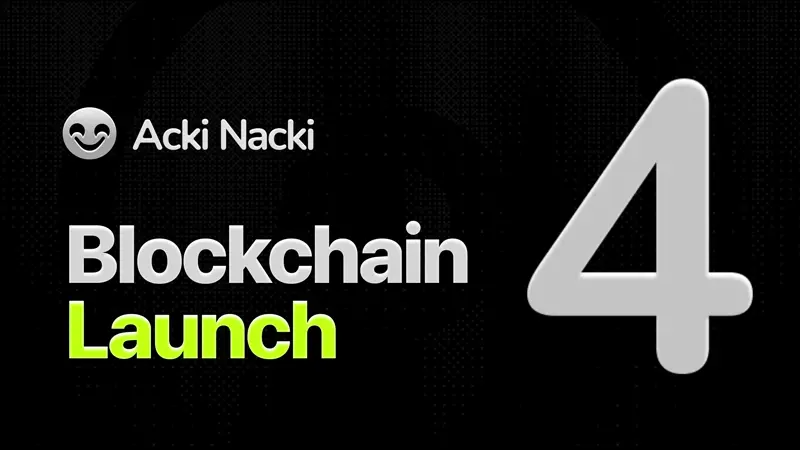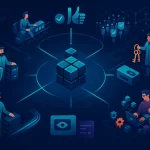We often compare the human mind to a computer, and not just poetically, it’s a deep analogy. Our neurons fire in patterns, creating thoughts, memories, decisions. Our behaviors can be modified by language, habits, incentives. Researchers call this programmability: our actions and beliefs can be redirected, optimized, even rewritten. But for all this, we don’t yet know how to program humans like we program software, that’s the frontier.
Imagine if we could. If we unlocked the “source code” of the mind, its cognitive architecture, biases, and hidden loops, we could reshape personalities, sharpen focus, even cure psychological diseases by sending the right “patch.”
AI: the compiler decoding our cognitive code
Today’s LLMs and neural nets already learn, adapt, and rewrite their behavior based on feedback, similar to how we do when we reflect or rehearse. NVIDIA’s CEO Jensen Huang recently said interacting with AI via natural language is like programming a person: “the human language itself becoming the programming language.” He called AI “the great equalizer,” because now anyone can express intent directly to the system, not just expert coders.
Could we harness this same dynamic to program ourselves? Already, techniques like CBT (cognitive behavioral therapy) leverage structured prompts and reflective questioning to change thinking patterns. AI amplifies that. Imagine conversational AI that evaluates your beliefs, gently guides your reflections, and challenges your assumptions. In that dance, the AI becomes both mirror and coach, rewriting sections of your mental “code.”
On the flipside, some envision AI agents designing interventions directly, for mental health, for learning, for creativity. These agents would monitor your patterns, adapt prompts, even shift emotional states. It’s programming… with us as the substrate.
Hardware and blockchain: skins for cognition?
AI needs massive hardware. GPUs, clusters, neuromorphic chips, people are racing to build chips optimized for brain-like computation. IBM’s NorthPole neuromorphic chip aggressively trims von Neumann inefficiencies, getting 4 000 × faster for certain tasks and 25× more energy‑efficient compared to GPUs. These chips mimic brain circuits to “compute as we think.”
Then there’s the intersection with blockchain. Technologies like NodeGoAI leverage blockchain to decentralize AI computing, creating marketplaces where everyday users rent idle CPUs/GPUs for model training.
And now, cutting‑edge research proposes using Proof of Useful Intelligence (PoUI), where blockchain consensus isn’t based on wasteful puzzles, but on performing actual AI tasks like image analysis. Suddenly, the network is both ledger and brain.
These developments unify three strands:
-
AI software that can learn and adapt.
-
Hardware built to mimic and support huge-scale cognition.
-
Blockchain infrastructure to distribute, secure, and reward large-scale cognitive computing.
Rising horizon: mind-uploading, digital immortality, and programmable humans
This matrix of AI + hardware + blockchain starts to power long‑standing futurist dreams: mind uploading, digital immortality, and immortality by reprogramming the self.
-
Mind uploading envisions scanning and simulating a human brain in software, creating continuity of consciousness.
-
Digital immortality goes further: avatars of people that persist in virtual form, evolving post‑mortem as seed AI.
-
Our dream: live forever, or at least extend cognition indefinitely, uploading ourselves to decentralized, secure systems.
But is this science? Or sci‑fi? Neuroscience is still mapping circuits; we lack understanding of consciousness. Philosophical debates swirl around whether a digital copy is you, or just a convincing simulation . Still, the building blocks are in progress.
What remains to build?
1. Understanding cognition as programmable architecture
We need cognitive theory that reduces mind patterns into modular, manipulable units, like software mental objects you can modify. This is far from psychology as it stands.
2. Neuromorphic hardware that runs cognitive loops
We need chips like IBM’s NorthPole not just for inference, but learning and memory encoding, chips that can feel the context, adjust synaptic weights, store mental traces, evolve with feedback.
3. Distributed blockchain infrastructure
Systems like NodeGoAI and PoUI are emerging. They promise to crowdsource computational muscle for intelligence, so we don’t rely on Google or Meta; we rely on the collective.
4. Ethical control layers
If humans become “programmable,” it’s powerful but perilous. Who writes the code? Is it democratic? Who defines values, rights, mental privacy? Without guardrails, programmable humans could be manipulated en masse.
Futurist predictions: next two decades
My futurist timeline:
| Timeframe | Milestone |
|---|---|
| 2025–2028 | AI therapeutics mature: GPT-class agents support mental health, education, habit formation, personalized to your mindset. |
| 2028–2032 | Neuromorphic chips hit consumer devices, allowing real-time lifelong logging, pattern recognition, memory assistance in wearables/BTC‑powered devices. |
| 2032–2038 | Decentralized compute networks like NodeGoAI and PoUI gain scale, offering private neural infrastructure. Early brain-upload experiments begin with volunteers. |
| 2038–2045 | Hybrid systems birth: AI coaching + cognitive supplements + blockchain-backed mind simulations. Digital clones form. |
| 2045+ | If we survive existential risks, we might witness early mind‑uploading for non‑biological immortality, running on globally distributed, secure cognitive ledgers. |
Yes, this timeline echoes Kurzweil’s singularity around 2045, with biological and machine minds merging.
The gamble: will we pull it off?
We’re not just racing tech, we’re testing humanity’s core. Programmability of humans could optimize society, eradicate mental illness, extend life, elevate purpose. Or it could fracture agency, centralize power, commodify cognition, amplify inequalit, echoing Technocrat dystopias.
We must ask: who writes our mental code? Will they be benevolent? Transparent? Decentralized, yes, blockchain can help. But society must define governance, consent protocols, rights. This isn’t sci-fi, it’s political, legal, moral terrain.
The mindset shift: embrace the weird
To get there, we need a new mindset:
-
Humility: the first rule of programming minds is, complicated damn things.
-
Transparency: open protocols, auditable cognitive models.
-
Shared wealth: distributed computation and value for all.
-
Empathy: reprogramming must respect identity, agency, culture.
Remember, in paintball, you don’t just win, you play fair. Programmable humans require a fair game.
Conclusion: Humanity 2.0?
In sum, humans are programmable in structure; in function, we already respond to stimuli like neural nets. What’s next is intentional programming, we instruct ourselves, rewrite destructive loops, optimize aspirations, or even export consciousness.
Advances in AI agents (prompt as code), neuromorphic chips (NorthPole), decentralized compute (NodeGoAI), and blockchain‑based consensus (PoUI) are converging dramatically. It’s not a question of if, but whether we will guide this power wisely.
If I wake tomorrow on my bike, beard tangled in the wind, I’ll hope this future is built not by a cabal, but by everyday people, developers, fathers, introverts, artists, who want to code themselves upward, not be overwritten.
Maybe in 20 years you won’t just code a website, you’ll code your mind. Will you choose the compiler?




